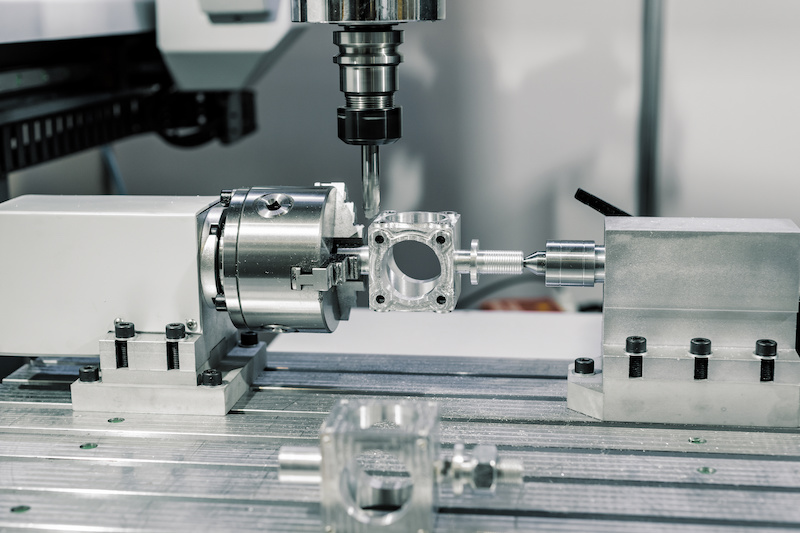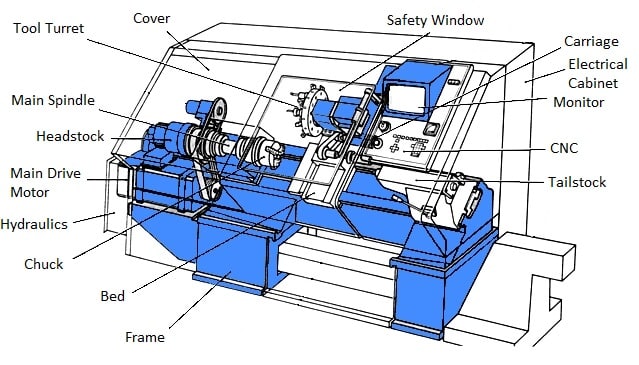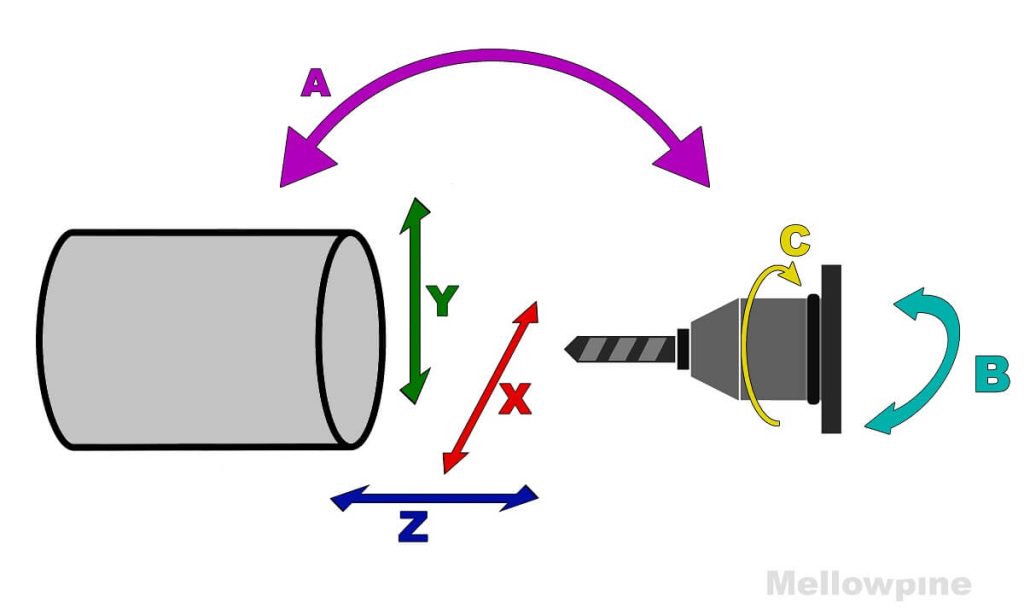Table of Contents
- How to Knurl on a CNC Lathe?
- Frequently Asked Questions
- What is knurling, and how does it work on a CNC lathe?
- What are the different types of knurling patterns, and how are they created?
- What are the advantages and disadvantages of knurling on a CNC lathe?
- What materials can be knurled on a CNC lathe?
- What are some common applications of knurling on a CNC lathe?
Are you new to CNC lathe operations? Or perhaps you’re a seasoned machinist looking to improve your knurling techniques? Either way, this guide on “How to Knurl on a CNC Lathe” is for you.
Knurling is a popular machining method that is often used to add grip and texture to cylindrical metal parts. It might seem like a complex process, but with the right tools and techniques, you can easily achieve high-quality knurls on your CNC lathe. In this guide, we’ll take you through the steps involved in setting up your lathe for knurling, selecting the right tooling, and executing the knurling process with precision and accuracy. So, let’s get started!
To knurl on a CNC lathe, follow these steps:
- Select the knurling tool and insert it into the tool holder.
- Adjust the tool height to the centerline of the workpiece.
- Set the knurl pitch and pressure on the CNC machine.
- Position the tool at the starting point of the knurling operation.
- Start the CNC machine and run the knurling program.
- Inspect the knurling for proper depth and finish.
- Remove the knurling tool from the holder and reset the machine for the next operation.
How to Knurl on a CNC Lathe?
Knurling is a process of creating a pattern of small ridges on a surface. It is typically used on handles, knobs, and other items that require enhanced grip. Knurling can be done manually or using a CNC lathe. In this article, we will discuss how to knurl on a CNC lathe.
Step 1: Choose the Right Tool
To start the knurling process, you need to select the right tool. The knurling tool typically has two wheels with a pattern of small ridges that will be pressed onto the surface of the workpiece. The wheels should be chosen based on the desired pattern and spacing of the knurls.
When selecting the knurling tool, ensure that it is compatible with your CNC lathe. You may need to use a specific tool holder to attach the knurling tool to the lathe.
Step 2: Set Up the CNC Lathe
Before starting the knurling process, you need to set up the CNC lathe. This involves selecting the right speed, feed rate, and depth of cut. The speed and feed rate will depend on the material you are knurling and the pattern of the knurls. The depth of cut should be set based on the desired height of the knurls.
Benefits of Knurling on a CNC Lathe
– Consistency: Knurling on a CNC lathe ensures that the pattern of the knurls is consistent across all workpieces.
– Speed: Knurling on a CNC lathe is faster than doing it manually, which saves time and increases productivity.
– Precision: CNC lathes offer greater precision than manual knurling, which results in a higher quality finished product.
Step 3: Knurl the Workpiece
Once the lathe is set up, you can begin the knurling process. Start by positioning the knurling tool at the desired location on the workpiece. The wheels of the knurling tool should be pressed against the workpiece with enough force to create the pattern of small ridges.
Move the knurling tool along the workpiece to create the desired pattern of knurls. The CNC lathe will ensure that the pattern is consistent across all workpieces.
Knurling on a CNC Lathe vs. Manual Knurling
– Speed: Knurling on a CNC lathe is faster than doing it manually, which saves time and increases productivity.
– Consistency: Knurling on a CNC lathe ensures that the pattern of the knurls is consistent across all workpieces.
– Precision: CNC lathes offer greater precision than manual knurling, which results in a higher quality finished product.
Step 4: Inspect the Knurled Surface
Once the knurling process is complete, inspect the knurled surface for any defects or inconsistencies. Use a magnifying glass to check the pattern of the knurls and ensure that they are evenly spaced and of the desired height.
Conclusion
Using a CNC lathe for knurling offers many benefits, including increased productivity, greater precision, and consistent results. By following the steps outlined in this article, you can successfully knurl on a CNC lathe and produce high-quality finished products.
Frequently Asked Questions
If you want to learn how to knurl on a CNC lathe, you’ll need to know some basics. This guide will provide you with some frequently asked questions along with their answers to give you a better understanding of knurling on a CNC lathe.
What is knurling, and how does it work on a CNC lathe?
Knurling is a process of creating a pattern of small ridges or grooves on a round object’s surface. The knurling tool is a type of cutting tool used to create these patterns. It works by pressing against the surface of the workpiece and cutting into it, creating a pattern of grooves or ridges.
On a CNC lathe, the knurling tool is attached to a tool holder and moved into position by the lathe’s computer. The knurling tool is typically made from high-speed steel, carbide, or diamond, depending on the material being knurled.
What are the different types of knurling patterns, and how are they created?
There are several types of knurling patterns, including straight, diagonal, diamond, and herringbone. These patterns are created by changing the angle of the knurling tool relative to the workpiece. For example, a straight pattern is created by keeping the knurling tool perpendicular to the workpiece, while a diagonal pattern is created by holding the tool at an angle.
The knurling pattern can also be adjusted by changing the pitch of the knurling tool. The pitch is the distance between the peaks of the knurling pattern. A larger pitch creates a coarser pattern, while a smaller pitch creates a finer pattern.
What are the advantages and disadvantages of knurling on a CNC lathe?
The main advantage of knurling on a CNC lathe is that it is a precise and repeatable process. The CNC machine can be programmed to create the same pattern on multiple workpieces, ensuring consistency in the final product. Knurling on a CNC lathe is also faster and more efficient than knurling by hand.
However, there are some disadvantages to knurling on a CNC lathe. One of the main disadvantages is that the knurling tool can be expensive and may require frequent replacement due to wear and tear. Additionally, the knurling pattern may not be as deep or defined as it would be if knurled by hand.
What materials can be knurled on a CNC lathe?
Most materials can be knurled on a CNC lathe, including metals such as aluminum, brass, and steel, as well as plastics and other non-metallic materials. The knurling tool used will depend on the material being knurled, as softer materials may require a different type of tool than harder materials.
It is essential to consider the material’s hardness and the knurling tool’s material to ensure that the tool does not become damaged during the knurling process.
What are some common applications of knurling on a CNC lathe?
Knurling is commonly used for decorative purposes, such as creating a pattern on the surface of a pen, flashlight, or other similar items. It is also used to add grip to handheld tools, such as screwdrivers or pliers, to make them easier to hold. In some cases, knurling is used to reduce friction between two parts by creating a textured surface.
Overall, knurling is a versatile process that can be used in many different applications, making it a valuable skill for machinists and CNC operators to have.
In conclusion, knurling on a CNC lathe is a valuable skill for any machinist to have. By following the steps outlined in this guide, you can achieve excellent results and produce high-quality knurled parts. Remember to choose the right tool and adjust the settings correctly, as this will make all the difference in the final outcome.
With practice and patience, you can master the art of knurling on a CNC lathe. Take the time to experiment with different materials and designs, and don’t be afraid to make mistakes. Learning from your errors is a crucial part of the process and will help you to improve your technique over time.
Ultimately, knurling is an essential part of many manufacturing processes, from automotive and aerospace to medical and industrial applications. By developing your knurling skills, you can expand your career opportunities and become a more versatile and valuable member of the machining industry.
Request a quote today!
Please compress the file into a ZIP or RAR file before uploading. Alternatively, send through your RFQ by email.
enquires@unitymanufacture.com





